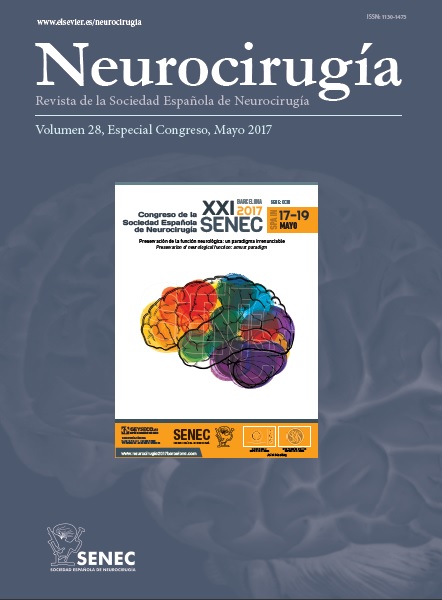C0409 - SUPERIOR PETROSAL VEIN COMPLEX IN TRIGEMINAL NEURALGIA. ANATOMICAL STUDY IN 42 OPERATED PATIENTS AND PROSPECTIVE ANALYSIS OF CLINICAL OUTCOME
Hospital General Universitario Gregorio Marañón, Madrid, Spain.
Objectives: To analyze the anatomy of superior petrous vein complex based on the intraoperative findings of 42 consecutive patients who underwent microvascular decompression surgery at our institution. A correlation between the anatomical findings and clinical outcome is presented.
Methods: We prospectively gathered anatomical data, namely the number of tributary veins, pattern of drainage (using Tanriover classification), number of connections to the superior petrosal sinus along with the clinical and follow-up data of patients who underwent microvascular decompression surgery from January 2012 to January 2017. Prospective analysis of the case series was also done, including outcome, complications and reinterventions.
Results: A total of 42 patients were included in the study. The most commonly affected trigeminal branch was V3 (31% isolated and 50% combined with V2 and/or V1-V2). Around 74% of the patients had an excellent outcome at follow-up. The predominant drainage pattern was type II, according to Tanriover system. In 25 patients (59.5%), 3 tributary veins were observed. The most commonly seen venous branches were the vein of the Cerebellopontine fissure and transverse pontine vein. When venous compression was observed, transverse pontine vein was the culprit vessel in 75% of cases. While 33% of the patients needed not coagulation of the any venous component of the superior petrosal vein complex (SPVc), coagulation of the superior petrous venous complex was done in 19% with no clinical consequences in the postoperative course.
Conclusions: Getting acquainted with the venous anatomy of the posterior fossa is of paramount importance. Type II drainage pattern of the SPVc (according to Tanriover: between the internal auditory meatus and Meckel’s cave) is the predominant pattern seen in our case series of patients with trigeminal neuralgia. In cases with type III and a subset of patients with type II (wherein the connection was very medial), a higher tendency to present venous compression was observed.







